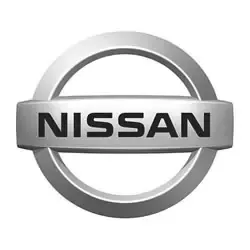Nissan LEAF Tire Pressure
Most common recommended tire pressure for Nissan LEAF is 36 psi based on year of production, trim and OEM tire size, but it maybe different for older models. It is imperative to confirm the exact tire inflation for your Nissan LEAF to ensure safety on the road. Always refer to your vehicle owner's manual for the correct tire pressure designated by vehicle's manufacturer.
Select your Nissan LEAF production year to see its recommended tire inflation.
| Model Year | Front Tires | Rear Tires |
|---|---|---|
| 2025 Nissan LEAF | 36 psi | 36 psi |
| 2024 Nissan LEAF | 36 psi | 36 psi |
| 2023 Nissan LEAF | 36 psi | 36 psi |
| 2022 Nissan LEAF | 36 psi | 36 psi |
Recommended Tire Pressure for Nissan LEAF
Maintaining the recommended tire pressure for a Nissan LEAF is essential for several reasons that directly impact safety, performance, and cost-effectiveness. Firstly, proper tire inflation is crucial for optimal contact between the tire and the road, ensuring better grip and handling, which is vital for the electric vehicle's responsiveness and stability, especially during adverse weather conditions. Secondly, tires inflated to the manufacturer's recommended pressure level exhibit decreased rolling resistance, which significantly contributes to maximizing the vehicle's range per charge. This aspect is particularly important for electric vehicles like the Nissan LEAF, where maintaining optimal range is a key concern for owners. Furthermore, correct tire pressure aids in evenly distributing the force of the road over the tire surface, leading to more uniform tire wear and thereby extending the lifespan of the tires. This not only saves money over time but also helps maintain the LEAF's efficient operation. Moreover, tires at the correct pressure are less likely to suffer from sudden tire failures, such as blowouts, enhancing the overall safety for occupants. Hence, regularly checking and adjusting the tire pressure on your Nissan LEAF, as per the manufacturer's recommendations, is a simple yet highly effective way to ensure the vehicle performs safely and efficiently, thereby protecting your investment and enhancing your driving experience.

All listed guides, data and/or calculations are for informational purposes only. TirePressure.com does not warrant or make any representations regarding the accuracy of or the results of the use of this information. Always refer to vehicle owner's manual for the correct tire pressure configuration.